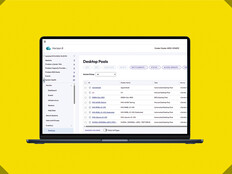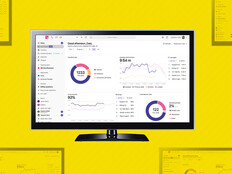FACT: Remote and Hybrid Work Isn’t Limited to Healthcare’s Administrative Offices
Many of the remote and hybrid roles in healthcare are in nonclinical settings, such as revenue cycle management, contact center agents and quality reporting specialists, according to a 2024 brief by the Medical Group Management Association. Workers want remote work or a hybrid setting in many cases, and it allows organizations to retain talent.
Aspects of remote or hybrid work are growing in clinical settings. When we think of virtual care, the image that first comes to mind is that of a patient using telehealth. But clinicians are also using virtual connections to consult with specialists, support bedside nurses (think virtual nursing) or collaborate on medical training and education.
Organizations are deeply concerned about current and projected healthcare workforce shortages and are looking for ways new technologies and processes can support their current teams. If, for example, a more senior nurse can still support the bedside by completing patient discharge and education virtually, that may be a workplace benefit for a longtime employee who is looking to spend less time on the floor.
Expanding virtual care can also be a strategy for healthcare organizations that want to open care access and build consumer interest, trust and loyalty. Connecticut-based Hartford HealthCare and hybrid care supplier OnMed launched a virtual care station at Bradley International Airport, so travelers who aren’t feeling well, for instance, can stop by and connect with a health professional in real time.
EXPLORE: How can healthcare organizations optimize meeting rooms for hybrid work?
FALLACY: All the Challenges of Remote Work Were Solved During the Pandemic
Of course, this is not the case. There is still friction when it comes to the in-office experience versus the remote experience, which can impact collaboration and productivity.
The employee perspective is key here. Make sure the right stakeholders are included in projects so that when your organization migrates or modernizes collaboration technologies, you’re not moving old problems onto a new platform. If organizations expect employees to come into the office for part of the workweek, they need to make sure the onsite experience is just as seamless as the employee’s well-designed home office set up. Does the office Wi-Fi lag or have frequent outages? Are meeting room cameras or audio worse than logging in from a laptop? These are just a few considerations for organizations working toward a hybrid work culture.
That also means that there may need to be a mindset shift, perhaps a clear reminder or indicator that remote workers are part of the team too. Say, for example, your office has a meeting that includes remote workers calling in. Are you including them in the conversation? Or are they shunted off on a screen somewhere and not easily visible? Would a pan-tilt-zoom camera be useful for employees to have so that speakers can get the full focus?
Part of designing a hybrid workplace strategy includes making the digital experience better. And, with the growing interest and use of artificial intelligence, how can agentic AI help simplify tasks so that workers can focus on mission-critical projects?
DISCOVER: This is the ultimate remote collaboration hardware and software toolkit.
FACT: Many Systems Still Need to Standardize Their Remote or Hybrid Work Strategies
A lack of standardization for remote or hybrid work is pervasive in healthcare. In the office space, there may be meeting rooms that don’t have the same level of connectivity or app availability, leading to unequal experiences. More organizations are assessing their current environment and considering standardizing platforms over disparate point solutions.
Clinicians entered healthcare not to troubleshoot tech problems, but to care for people’s health. So, how can their workflows be enhanced rather than impeded by the tools meant to help them become more flexible in their work? For example, how can an organization better manage the mobile device a nurse uses for patient care so that there aren’t any cumbersome steps for logins or logouts? How can healthcare IT teams ensure that these devices are secure and well managed? Standardization answers many of those concerns.
Click the banner below to sign up for HealthTech’s weekly newsletter.













